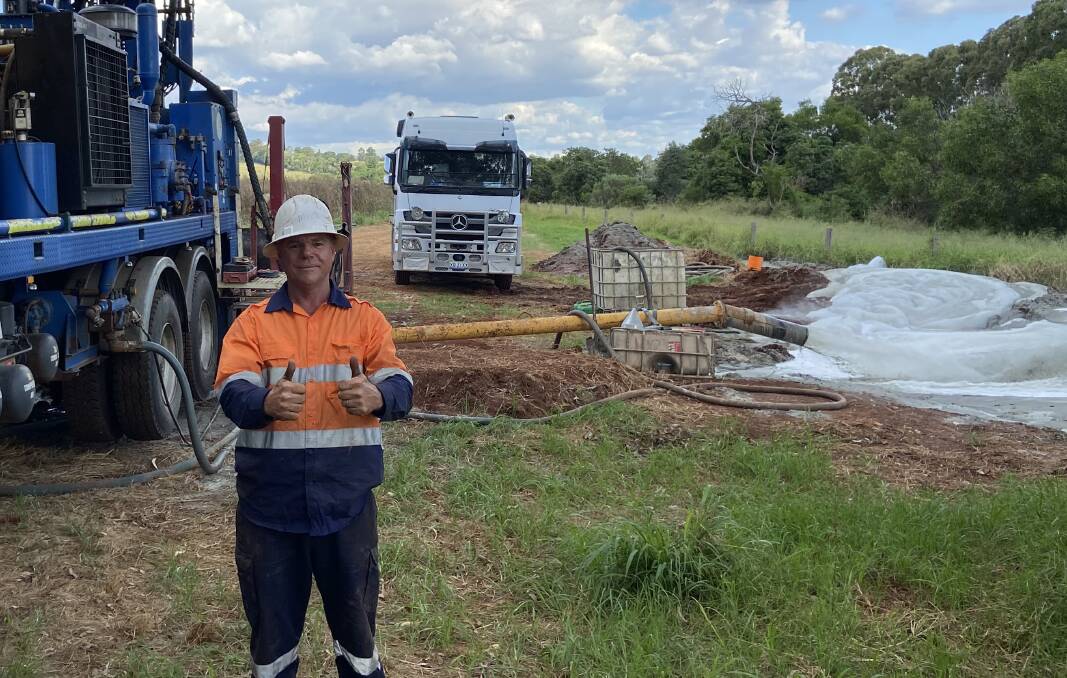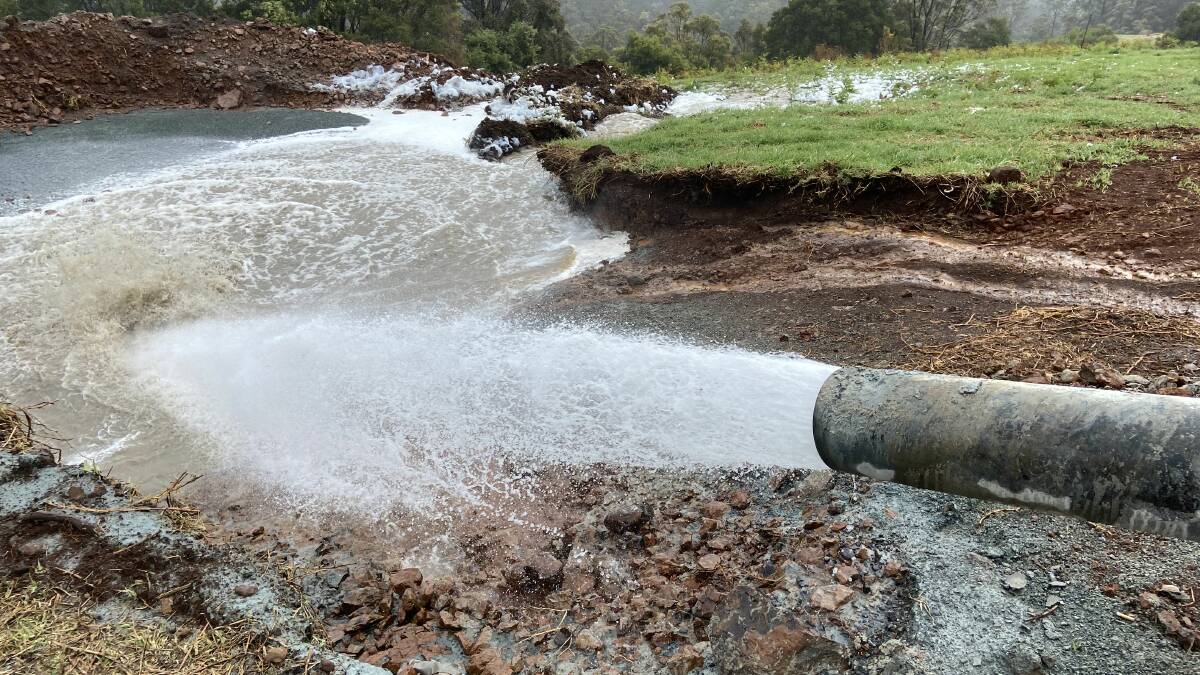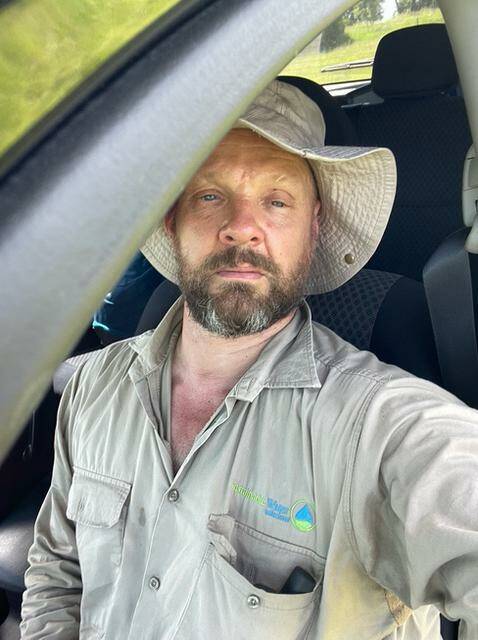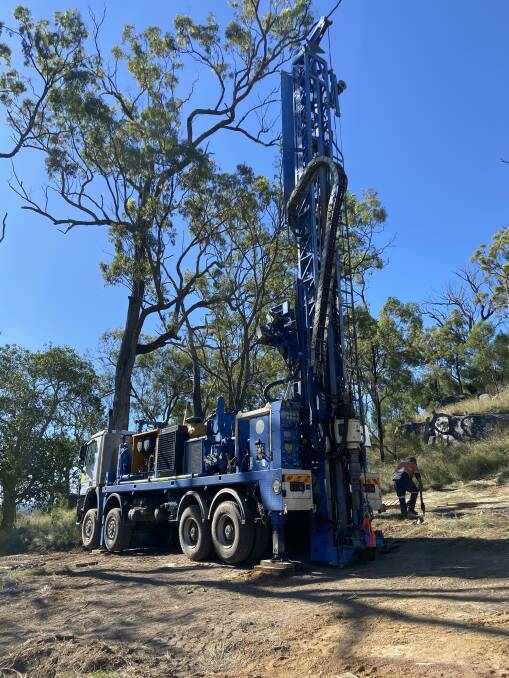
An increasing number of producers are engaging drillers to improve their water security for the next drought with one company able to find flows in regions always deemed to be dry.
While much of the state is enjoying a positive season, water drilling companies say producers are looking ahead and exploring the potential of groundwater.
Since establishing in November 2019, Sustainable Water Pty Ltd has a success rate of more than 82 per cent at finding water at their site predictions and serviced at least 100 different farms from west of Winton, to Cairns and down to the Darling Downs.
Also read: Eidsvold Cattle Drive back in the saddle
Local councils have also met with the company, which is busting the myth that deep water flows are highly unlikely in some agricultural growing communities like the Granite Belt.
The company uses a combination of water mapping, geographic information system analytics, Passive Seismic and onsite survey technologies, which mining companies have been known to draw on, to pinpoint the drilling spot and expected depth.
By drilling into the weaknesses their clients are now boasting flows of up to 30 litres a second.

They're focused on deeper water sources, sometimes drilling to 350m to find the strongest flow of water, which has been said to be millions of years old.
General manager Ross Martiensen said the water source they looked for was traditionally not accepted by hydrologists or the current norm.
"We started work in Stanthorpe because they were out of water and having to truck it in and all the government experts say there is no water and it's impossible to find it below 120m," he said.
"We've had five or six successful bores all of which have been accessing water below that level, some of them 300m deeper at irrigation type quantities.

"The water is unique and traditionally not accepted and when we first looked at how are most bores selected, it's been proximity to power or exisiting infrastructure or diviners and there hasn't been anyone offering, other than hydrologists, a somewhat data driven approach.
"When you are looking for this type of water, according to our national mapping, traditionally the driest or least productive areas have quite often the highest potential for deep water. I'm not talking Great Artesian Basin, I'm talking sub artesian water.
"The ability to have much higher productive land across Queensland is quite high if the right tech is used and that means water in the river and creeks can get back to those environmental flows if we've got other more sustainable sources of water."
Driller Mick Sanderson boasts a 100 per cent success rate with Sustainable Water Pty Ltd and said it was important they hit the selected spot, exactly. He once spent two days inspecting a location on a hill before eventually drilling within six inches of the pinpoint.
"Every hole we have drilled, we have hit water and significant, good quality, very old water trapped in between two component layers or a weak spot," he said.
"Drilling a hole and taking a bit out of it is like taking a drop out of the ocean.
"They are significant life changing results for land owners; one lady in the drought was basically showering three times a week and used shower water to wash clothes and then clothes water to water plants to having 20L a second of really high quality water.
"There was one landowner who drilled three or four wells that were dry, I think one of the wells produced half a litre per second and we drilled 200m away, went a little deeper and found 6L per second so over 10 times more flow rate and he was astounded that he had drilled all these holes and missed and bang, we hit it."
The Glen producer David Crombie had battled through droughts reliant on surface water.

He was prompted to try the Sustainable Water Pty Ltd after multiple failed drilling attempts and has since been able to drill enough water for stock and domestic purposes across the 10,000 acre breeder country featuring granite and traprock derived soils.
"I went into it with a healthy level of skepticism but at the end of it I came out thinking these guys have got something that completely disproves all the local theories and demonstrated that in the right spot there is water in the Granite Belt traprock which completely transforms that country," he said.
"I've always regarded underground water exploration or the harnessing of underground reserves as always being a certain amount of 'black magic' involved.

"The Granite Belt has always been noted as somewhere where there is no underground water, but these people have disproved that and it's transformational."
David Smith, a producer to the south of Warwick, was able to successfully find underground water and attributed the success to the depth of their new hole.
"We were told by a lot of locals you wont find any water, you'll find a bit at the surface but then it dries up," he said.
"...all we have got flowing through the property is an intermittent creek and during 2017 it was impossible to keep any stock on the property so having permanent water was critical if we wanted to keep stock on there."
The investment costs under $10,000, before drilling takes place, but Mr Martiensen said producers were looking to the future and could see the value after paying more than that to explore dry bores.
"They are very much aware the drought is not broken, it's just a bit of rain before the next drought kicks in so a lot of people are looking at getting that water infrastructure in place," he said.
"It tends to be those forward thinking good operators or in areas where traditionally its very poor prospects of hitting water through bores and have had such a bad time of it during drought with dams and things, they know they have to try to create a different solution."
Want daily news highlights delivered to your inbox? Sign up to the Queensland Country Life newsletter below.


